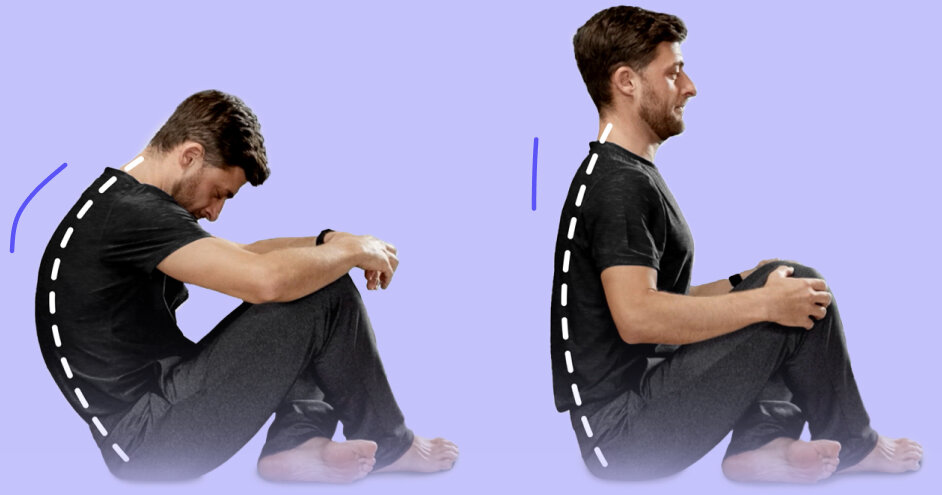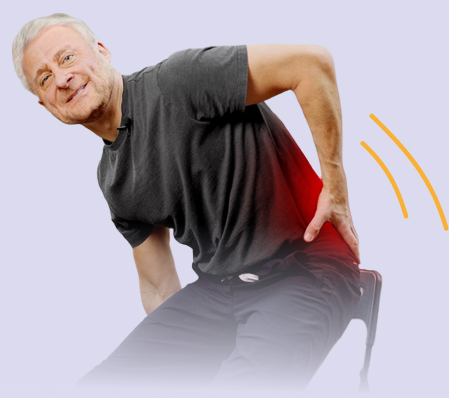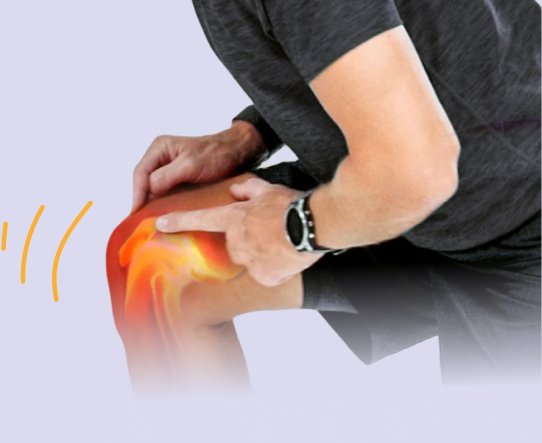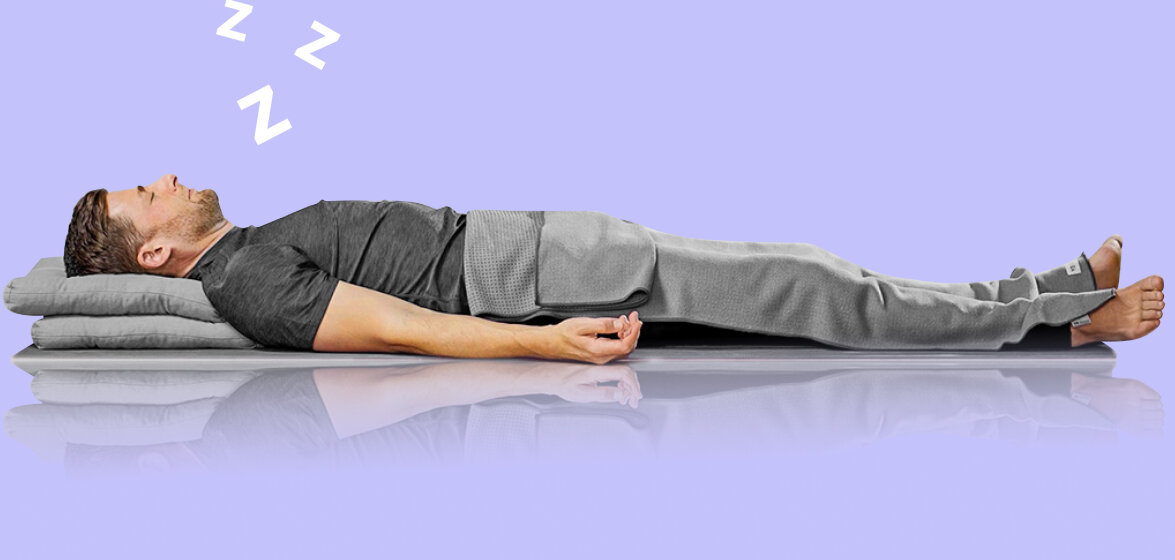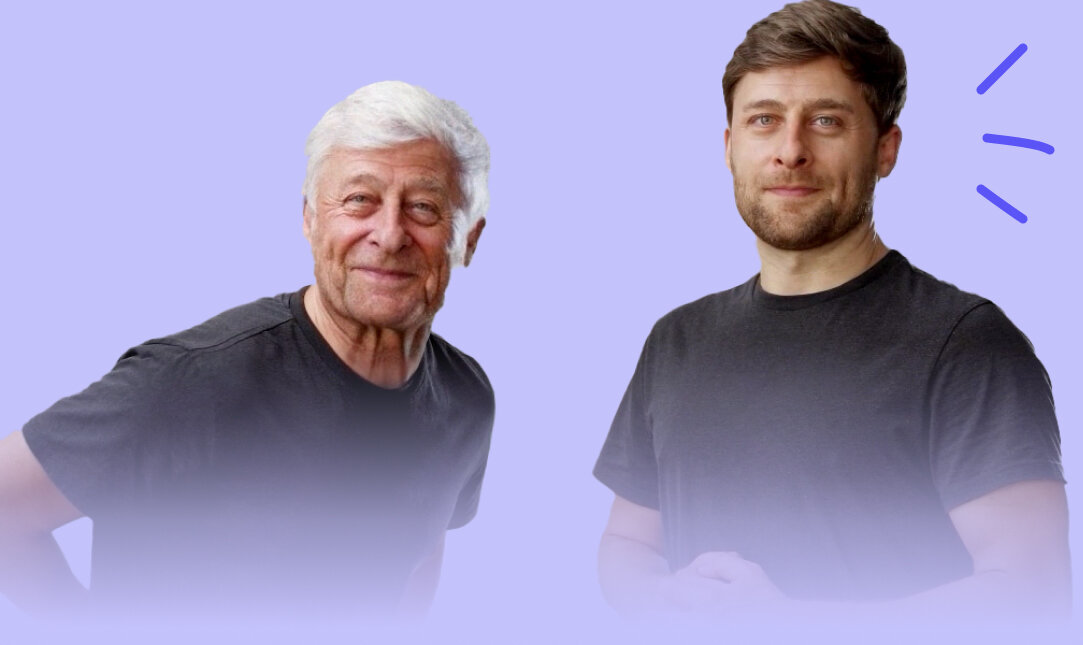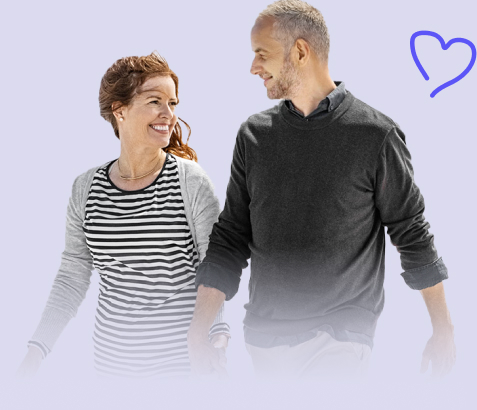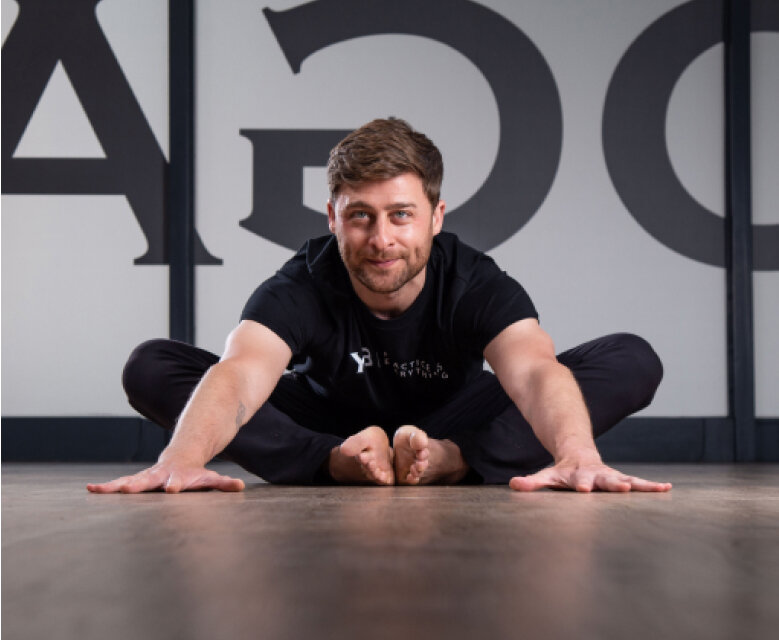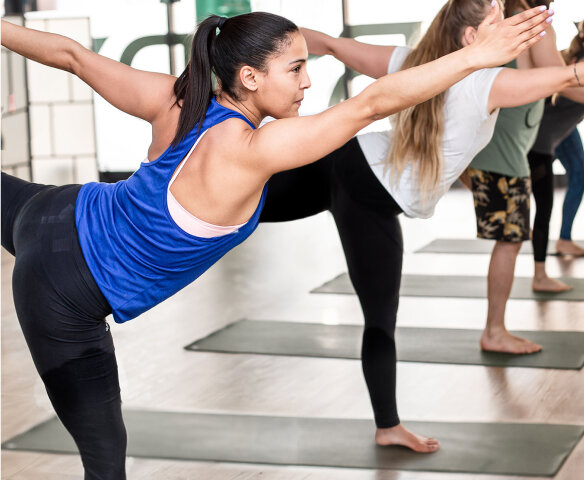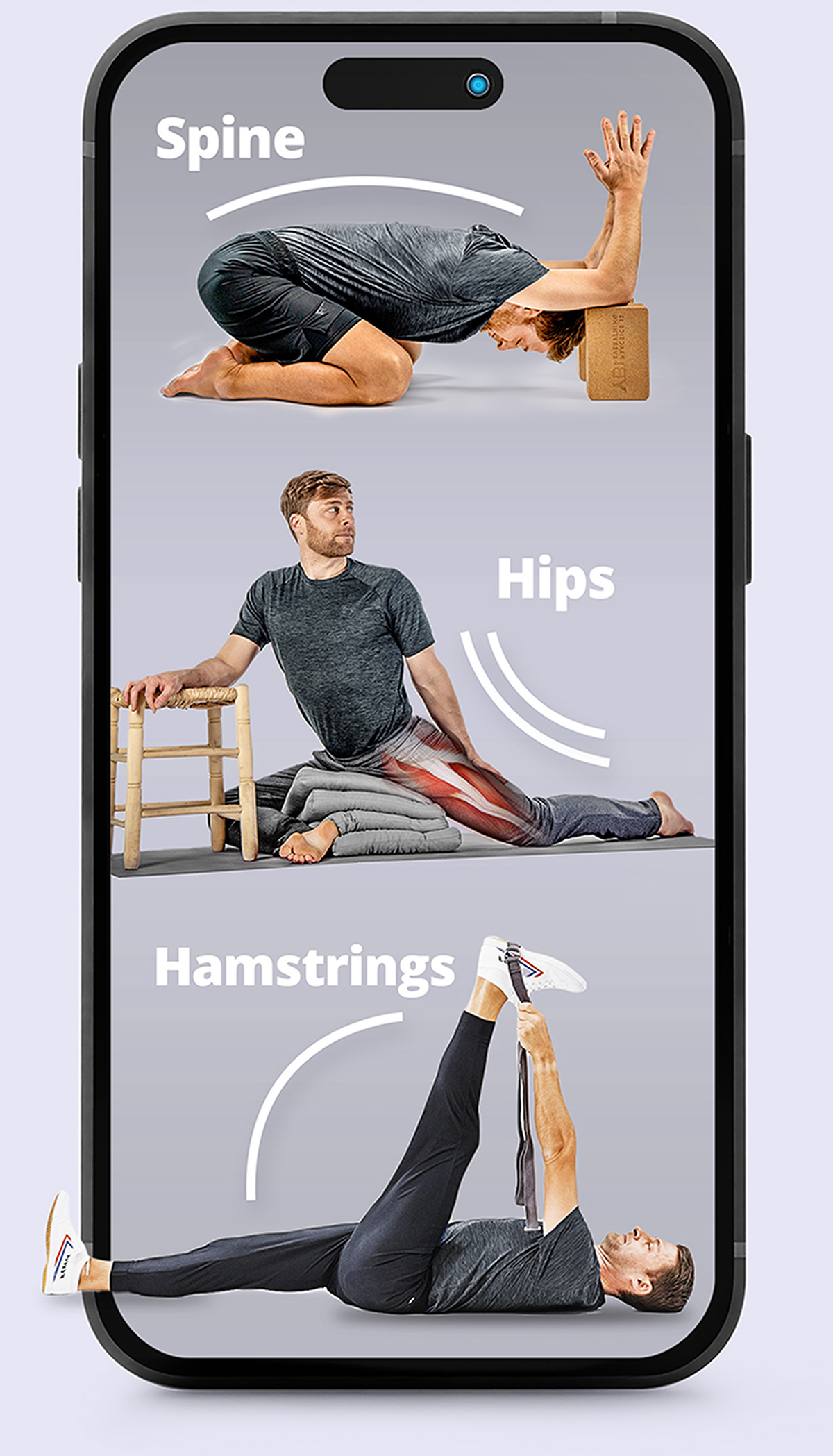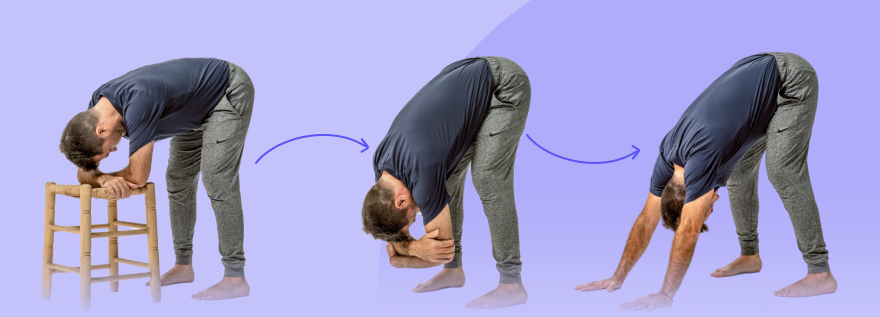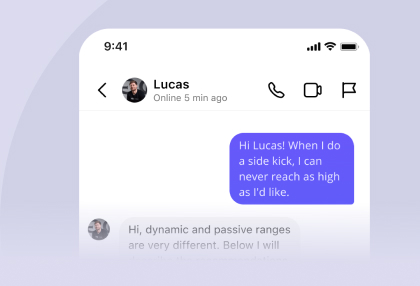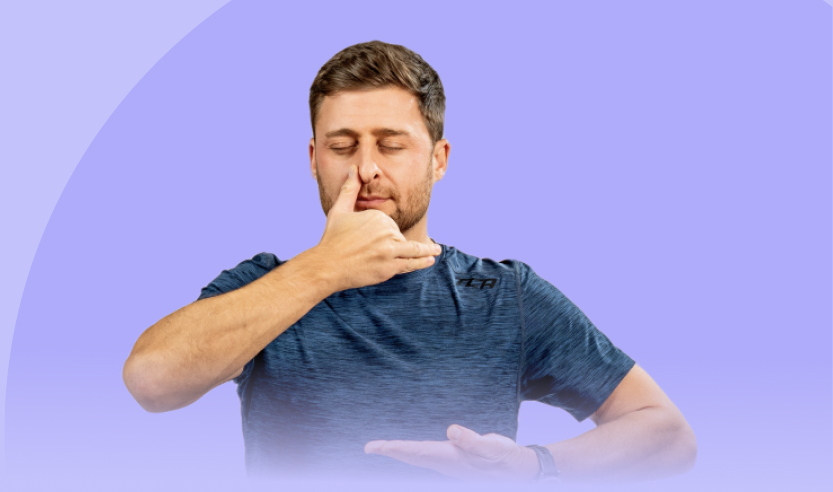15 Min/Day | Instant Access
Double Your Flexibility in the Next 4 Weeks
Unlock Your Hips,
Hamstrings, and Spine

Learn more about the
Top Benefits You’ll Experience
Why Are We So Stiff?
Most students I work with today are frustrated because they've lost their basic range of motion, such as the ability to bend forward at the hips, squat down deeply, and clasp their hands behind their back.
By the time most people reach adulthood, not only have they stopped playing like a kid, they’ve lost the functional flexibility required to squat and lift a box or a child from the floor, hang from monkey bars, cross their legs while sitting on the floor, and move freely in their favorite sports.
Discover
What Does
“Double Your Flexibility” Mean?
In stretching terms, “doubling” actually means “halving” the difference between your current range of motion with functional targets. Remember, your goal is functional range of motion, not contortion or tricks, so a doubling is very attainable.
In the first photo I am palming the floor in a forward bend. Try this pose, and measure how far you are from this goal. Within 30 days, you should be able to halve that, aka double your range.
In the second photo, I’m sandwiching my legs in Double Pigeon. Try it and measure the gap between your knees. Within 30 days, you can expect to cut that distance in half, aka double your range in this pose.
- In the first photo I am palming the floor in a forward bend. Try this pose, and measure how far you are from this goal. Within 30 days, you should be able to half that, aka double your range.
- In the second photo, I’m sandwiching my legs in double pigeon. Measure the gap between your knees today, and within 30 days, you can expect to cut that distance in half, aka double your range in this pose.
My “Stiff Office Guy” Story
I remember going to a crowded party in New York City in 2002. There were no chairs left so my friend suggested we sit on the floor—and why not? Sitting on the floor is a perfectly normal human thing to do, except that, like most people, I had not sat on the floor since elementary school.
This is where it got ridiculous.
The girl I was with was an avid yoga student, so she flipped one leg on top of the other sitting in Lotus position as if it were the easiest thing in the world. But me? My hips were so tight, I couldn’t sit on the ground without my knees bent up to my chest and my back curled up like Quasimodo.
It’s Not Too Late
Ask yourself, “What if first thing in the morning, I could bend over and put the palms of my hands flat on the floor in a forward bend?”
What if you could sit cross-legged with no back support for an hour in the middle of a room without any discomfort? What if you could twist 180 degrees, do a full backbend with your arms straight, and clasp your hands behind your back in a shoulder stretch?
All of those movements sounded impossible to me during my flexibility crisis, but I now know that they are basic movements that can be relearned by anyone who is willing to set aside 15 minutes a day for flexibility training and add specific micronutrients to their diet to support their tissues. Proper flexibility training and proper nutrition are where you’ll find the biggest results.
Take a look at
Why Yoga Classes Often Fail
There’s a stereotype that yoga classes are all about flexibility, but that’s almost never the case. Most classes focus on strength, balance, breath, concentration, and the mind-body connection, with flexibility at the bottom of the list of priorities.
Sign up for
The Science of Stretching ®
15-min Daily Flexibility Program - Instant Access!
Special Offer Ends in...
Benefits
- Fewer athletic injuries
- Reduced body pains
- Improved circulation
- Travel in comfort
- Improved sleep
How it Works
- 5 days per week of practice x4 weeks (20 classes in total)
- 15 minutes of daily practice recommended
- Nutritional tips to help with flexibility
- Weekly Q&A session (Lucas answers group questions)
- 30 days of direct access to Lucas (via Instagram)
- Lifetime access to the content
Added Extras
Free Bonus Materials
The Nervous System and Yoga Connection
Anthony developed his approach to supplemental flexibility training after seeing a series of doctors who attempted to treat a nerve condition, which sometimes caused his entire right side to go numb. It was a weird condition that no one could figure out.
The doctors were not able to cure the nerve problem, but along the way, Anthony was introduced to some of the very interesting nutrition research and movement practices for nervous system health.
I didn’t know this then, but as much as 50 percent of your flexibility is determined by your nervous system—not your muscles!
My Life as a Yoga Guinea Pig
I followed Anthony’s flexibility training program exactly as he instructed. It really only takes 15 minutes per day, and you do it right before bed so it’s easy to fit into your schedule. I’m not saying it’s easy, these are some really challenging poses, the time goes by quickly and results are incredible. I began eating the water and nutrient-dense foods Anthony recommended, and I even started experimenting with some basic whole food supplements, things you can now find in any pharmacy (that wasn’t the case back then).
Why Nutrition Matters
There’s a reason why bodybuilders eat loads of protein and endurance athletes suck down sugary gels—it makes them better at their individual sports. Almost every movement practice in the world has a preferred diet, but the traditional yoga diet of bread, milk, beans, and rice is a total disaster for health and flexibility.
In an ideal world, it would be great if we all ate a perfectly balanced, micronutrient-dense diet and drank spring water loaded with minerals. But we don’t. Micronutrient deficiencies are more common than not since the advent of mass agriculture because mass-produced food is synonymous with low micronutrient food.
Passive Stretches
+ Time Under Passive Tension
When I first started stretching, I wish someone had told me that muscles stretch best when they are relaxed. It seems obvious now, but I’d never thought it through. This concept is essential if you’re serious about increasing your flexibility, so I’ll say that again: muscles stretch best when relaxed. This means when you’re in the middle of a dynamic movement, whether running or doing Warrior I, it’s very unlikely your soft tissues will lengthen. It can happen, but it’s a very slow process and much less effective than when you’re completely relaxed. The Science of Stretching® involves long-hold, timed poses in a completely passive position. Here’s why this matters.
Just 15-Min Per Day
Your 5-Day Schedule
All-Levels Class - Beginners Welcome
- Day 1: Hamstrings
- Day 2: Hips
- Day 3: Shoulders
- Day 4: Back
- Day 5: Wrists / Twists / Ankles
WHAT OUR STUDENTS SAY
Student Reviews
Verify on Trustpilot, Facebook or Yoga Alliance

“Great programs for improved flexibility”
I have Lucas' Hip Opening Challenge and Science of Stretching programs. Very easy to follow and options for all levels. Just 15 minutes a day and I have already seen significant improvements in my flexibility - I'm 67. An added bonus, I'm driving the golf ball 15/20 yds further.
Clive Gidney

“Don’t wait any longer. Your body will thank you!”
I kept seeing YOGABODY’s ads and thinking that this would be good for me. But I didn’t push the “let’s do this” button for several months. Finally, I did, and it was the very best decision for my body! With his stretching exercises and clear explanations, I am moving better in every direction! Don’t wait any longer. Your body will thank you!
RoRo

“I cannot believe the results!”
I am a lean, athletic, 5'9", 41-year-old woman who didn't understand why she couldn't touch her toes or sit comfortably on the floor until I met Lucas. Within four weeks of putting in the work, I am seeing and feeling movement in myself like never before. Thank you, Lucas and team.
Lauren Glick

“A big difference after just four weeks”
I like the different levels of modifications and the explanation of which parts of the body and muscles you are using. I have been noticing a big difference after just four weeks.
Michael Baugnon

“More flexible at last”
I have looked for a long time to find a program to increase my flexibility and to explain the science behind what it takes to make yourself more flexible. I really do like the program!
Tom Boecking

“Better than physio in achieving results”
Better than physio - I'm getting better results from this program than with physio exercises for car accident rehab. Finally starting to walk with less pain and only two weeks into it.
Julie Dal Pra
Frequently Asked Questions
About me
I’m a yoga trainer, studio owner, podcaster, and corporate wellness trainer. When I started practicing yoga, I couldn’t touch my toes, but within a very short period of time, I completely transformed my body and my life.
One of the things that frustrates me is that, for the most part, the ‘how to’ teachings in...
Get Started Now
The Science of Stretching® has been transformational for tens of thousands of students around the world, and it’s one of the most popular programs we teach. So if you’re feeling stuck in your practice and your flexibility, my suggestion is to simply get started. Clearly, what you’ve been doing up until now hasn’t worked, so it’s time to try a new approach.
Remember, all purchases come with a 100 percent money-back guarantee. This is only rewarding for us if you get results.
Since the video training part of this program is online streaming (or download), you will get access instantly. This means you can start on your 15-minute daily stretching program right away, this evening, no need to wait another day. Thank you for your interest in YOGABODY, and I look forward to helping you double your flexibility.
P.S. Some students get really ambitious and want to stretch for 30 or even 60 minutes a day. You can certainly do that, it’s helpful, but I’d encourage you to focus on the 15-minute-per-day commitment first. Stretching is most effective when done regularly rather than here and there for long sessions. Daily practice is where the magic lies. Time to roll out your mat!
Sign up Now
The Science of Stretching ®
15-min Daily Flexibility Program - Instant Access!
Special Offer Ends in...
Benefits
- Fewer athletic injuries
- Reduced body pains
- Improved circulation
- Travel in comfort
- Improved sleep
How it Works
- 5 days per week of practice x4 weeks (20 classes in total)
- 15 minutes of daily practice recommended
- Nutritional tips to help with flexibility
- Weekly Q&A session (Lucas answers group questions)
- 30 days of direct access to Lucas (via Instagram)
- Lifetime access to the content
